British science fiction writer Arthur C. Clarke formulated three adages that are known as Clarke's three laws, of which the third law is the best known and most widely cited. They are part of his ideas in his extensive writings about the future.

Isaac Asimov was an American writer and professor of biochemistry at Boston University. During his lifetime, Asimov was considered one of the "Big Three" science fiction writers, along with Robert A. Heinlein and Arthur C. Clarke. A prolific writer, he wrote or edited more than 500 books. He also wrote an estimated 90,000 letters and postcards. Best known for his hard science fiction, Asimov also wrote mysteries and fantasy, as well as much non-fiction.

John Wood Campbell Jr. was an American science fiction writer and editor. He was editor of Astounding Science Fiction from late 1937 until his death and was part of the Golden Age of Science Fiction. Campbell wrote super-science space opera under his own name and stories under his primary pseudonym, Don A. Stuart. Campbell also used the pen names Karl Van Kampen and Arthur McCann. His novella Who Goes There? was adapted as the films The Thing from Another World (1951), The Thing (1982), and The Thing (2011).

Murray Leinster was a pen name of William Fitzgerald Jenkins, an American writer of genre fiction, particularly of science fiction. He wrote and published more than 1,500 short stories and articles, 14 movie scripts, and hundreds of radio scripts and television plays.
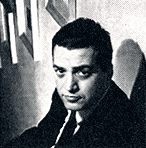
Alfred Bester was an American science fiction author, TV and radio scriptwriter, magazine editor and scripter for comic strips and comic books. He is best remembered for his science fiction, including The Demolished Man, winner of the inaugural Hugo Award in 1953.

Edward Groff Conklin was an American science fiction anthologist. He edited 40 anthologies of science fiction, one of mystery stories, wrote books on home improvement and was a freelance writer on scientific subjects as well as a published poet. From 1950 to 1955, he was the book critic for Galaxy Science Fiction.

The Magazine of Fantasy & Science Fiction is a U.S. fantasy and science-fiction magazine, first published in 1949 by Mystery House, a subsidiary of Lawrence Spivak's Mercury Press. Editors Anthony Boucher and J. Francis McComas had approached Spivak in the mid-1940s about creating a fantasy companion to Spivak's existing mystery title, Ellery Queen's Mystery Magazine. The first issue was titled The Magazine of Fantasy, but the decision was quickly made to include science fiction as well as fantasy, and the title was changed correspondingly with the second issue. F&SF was quite different in presentation from the existing science-fiction magazines of the day, most of which were in pulp format: it had no interior illustrations, no letter column, and text in a single-column format, which in the opinion of science-fiction historian Mike Ashley "set F&SF apart, giving it the air and authority of a superior magazine".

Lloyd Biggle Jr., was an American musician, author, and internationally known oral historian.
This is a bibliography of the books written or edited by Isaac Asimov, arranged alphabetically. Asimov was a prolific author, and he engaged in many collaborations with other authors. This list may not yet be complete. The total number of books listed here is over 500. Asimov died in 1992 at age 72; a small number of his books were published posthumously.

William Peter Blatty was an American writer, director and producer. He is best known for his 1971 novel, The Exorcist, and for his 1973 screenplay for the film adaptation of the same name. Blatty won an Academy Award for Best Adapted Screenplay for The Exorcist, and was nominated for Best Picture as its producer. The film also earned Blatty a Golden Globe Award for Best Motion Picture – Drama as producer.

Quasar, Quasar, Burning Bright is a collection of seventeen scientific essays by American writer and scientist Isaac Asimov. It was the thirteenth of a series of books collecting essays from The Magazine of Fantasy and Science Fiction. These essays were first published between May 1976 and September 1977. It was first published by Doubleday & Company in 1978. Its title is derived from the first line of William Blake's 1794 poem "The Tyger".
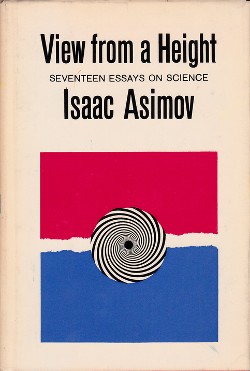
View from a Height is a collection of seventeen scientific essays by American writer and scientist Isaac Asimov. It was the second of a series of books collecting essays from The Magazine of Fantasy and Science Fiction, written between 1959 and 1962. It was first published by Doubleday & Company in 1963. The book received a review in Science Magazine. and The American Biology Teacher.

Fact and Fancy is a collection of seventeen scientific essays by American writer and scientist Isaac Asimov. It was the first in a series of books collecting his essays from The Magazine of Fantasy and Science Fiction, and Asimov's second book of science essays altogether. Doubleday & Company first published it in March 1962. It was also published in paperback by Pyramid Books as part of The Worlds of Science series.
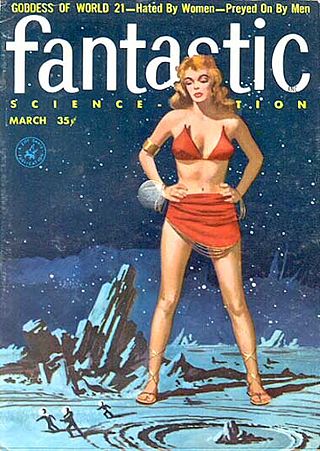
Henry Slesar was an American author, playwright, and copywriter. He is famous for his use of irony and twist endings. After reading Slesar's "M Is for the Many" in Ellery Queen's Mystery Magazine, Alfred Hitchcock bought it for adaptation and they began many successful collaborations. Slesar wrote hundreds of scripts for television series and soap operas, leading TV Guide to call him "the writer with the largest audience in America."
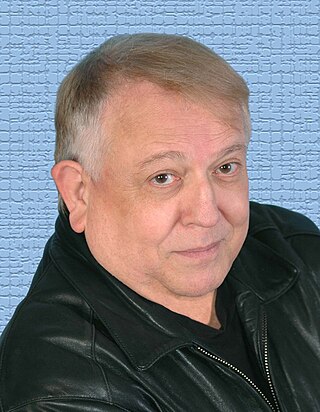
Marvin Nathan Kaye was an American mystery, fantasy, science fiction, and horror author, anthologist, and editor. He was also a noted magician and actor. Kaye was a World Fantasy Award winner and served as co-publisher and editor of Weird Tales Magazine.
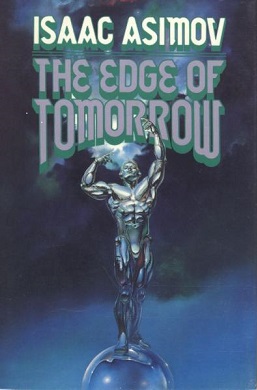
The Edge of Tomorrow is a collection of short science fiction stories and science essays by Isaac Asimov, published by Tor Books in July 1985.

The Asimov Chronicles: Fifty Years of Isaac Asimov is a collection of forty eight short science fiction and mystery stories and two science essays by American writer Isaac Asimov, published by Dark Harvest in May 1989.
Depending on the counting convention used, and including all titles, charts, and edited collections, there may be currently over 500 books in Isaac Asimov's bibliography—as well as his individual short stories, individual essays, and criticism. For his 100th, 200th, and 300th books, Asimov published Opus 100 (1969), Opus 200 (1979), and Opus 300 (1984), celebrating his writing.

The Platinum Collection is a compilation album by Cliff Richard, released on 14 November 2005. The album peaked at number 51 on the UK Albums Chart. The album is a triple album set featuring 59 tracks.
















